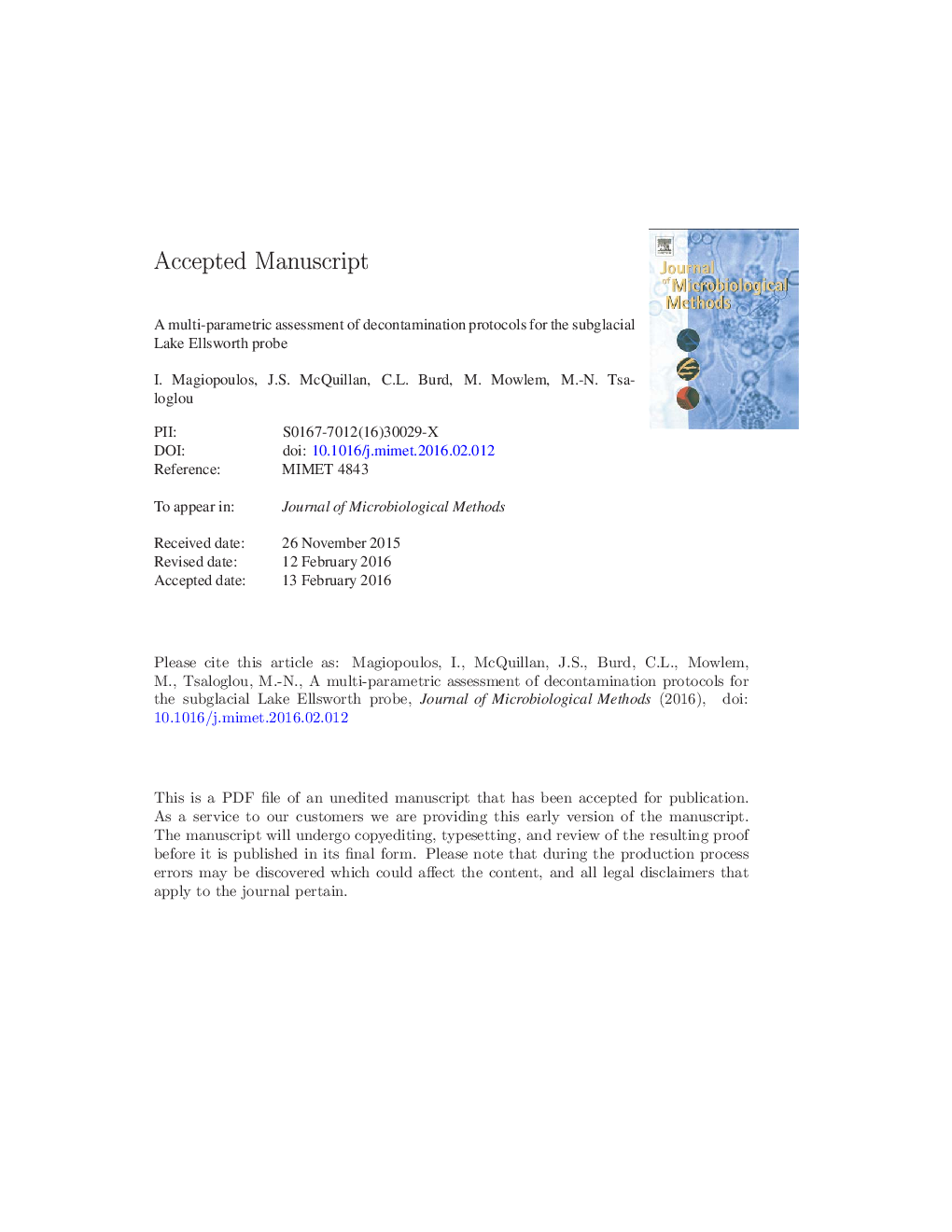| Article ID | Journal | Published Year | Pages | File Type |
|---|---|---|---|---|
| 8421174 | Journal of Microbiological Methods | 2016 | 30 Pages |
Abstract
Direct measurement and sampling of pristine environments, such as subglacial lakes, without introducing contaminating microorganisms and biomolecules from the surface, represents a significant engineering and microbiological challenge. In this study, we compare methods for decontamination of titanium grade 5 surfaces, the material extensively used to construct a custom-made probe for reaching, measuring and sampling subglacial Lake Ellsworth in West Antarctica. Coupons of titanium were artificially contaminated with Pseudomonas fluorescens bacteria and then exposed to a number of decontamination procedures. The most effective sterilants were (i) hydrogen peroxide vapour, and (ii) Biocleanseâ¢, a commercially available, detergent-based biocidal solution. After each decontamination procedure the bacteria were incapable of proliferation, and showed no evidence of metabolic activity based on the generation of adenosine triphosphate (ATP). The use of ultraviolet irradiation or ethyl alcohol solution was comparatively ineffective for sterilisation. Hydrogen peroxide vapour and ultraviolet irradiation, which directly damage nucleic acids, were the most effective methods for removing detectable DNA, which was measured using 16S rRNA gene copy number and fluorescence-based total DNA quantification. Our results have not only been used to tailor the Ellsworth probe decontamination process, but also hold value for subsequent engineering projects, where high standards of decontamination are required.
Keywords
Related Topics
Life Sciences
Biochemistry, Genetics and Molecular Biology
Biotechnology
Authors
I. Magiopoulos, J.S. McQuillan, C.L. Burd, M. Mowlem, M.-N. Tsaloglou,
